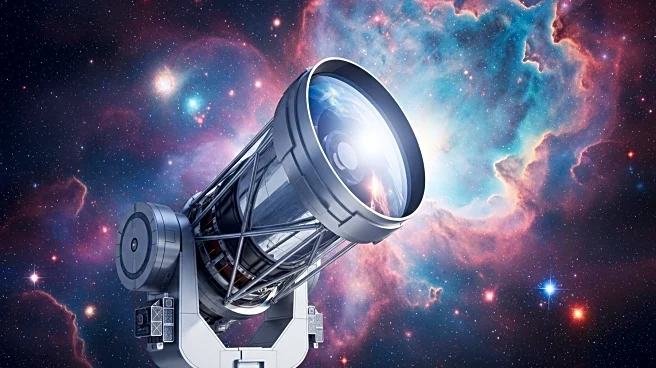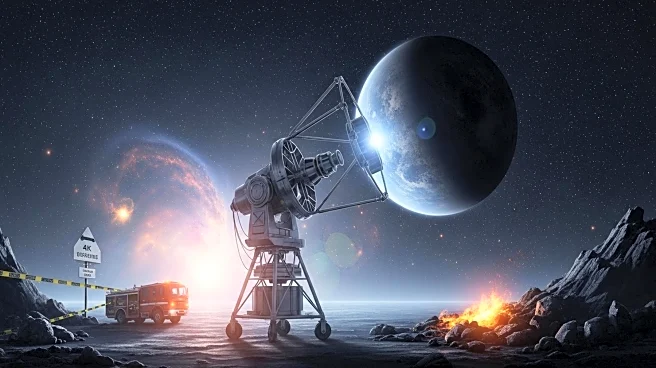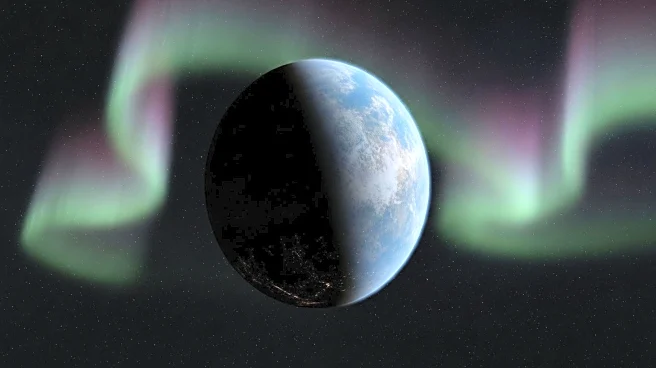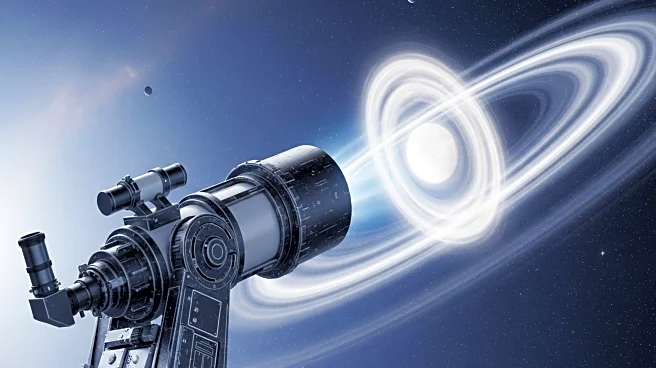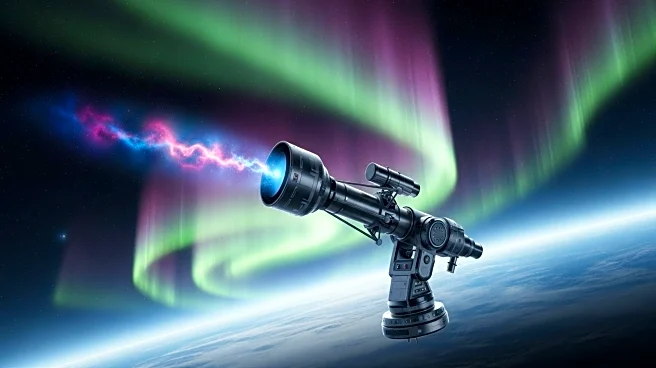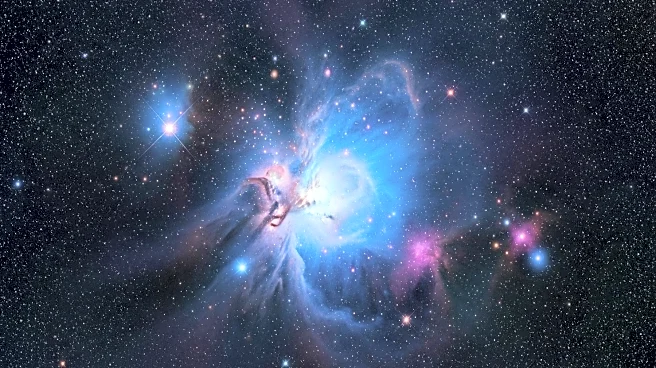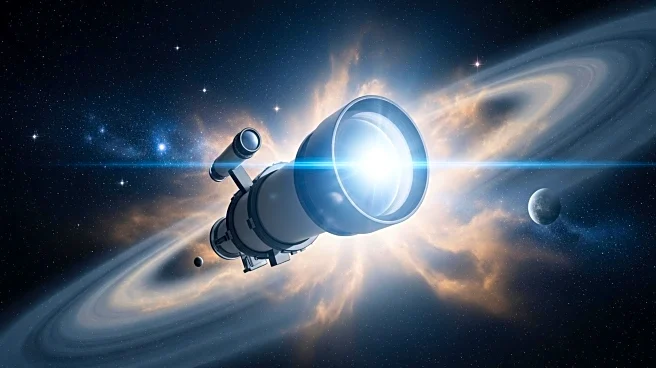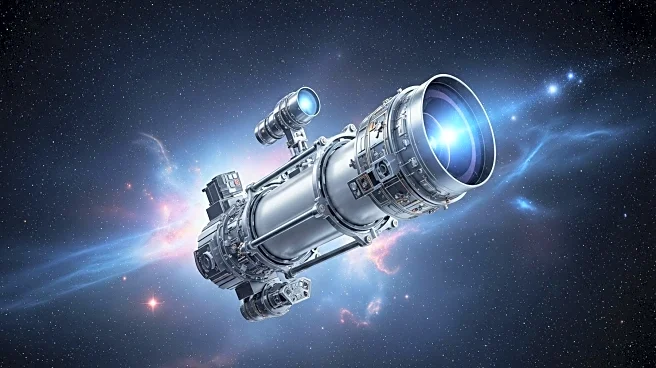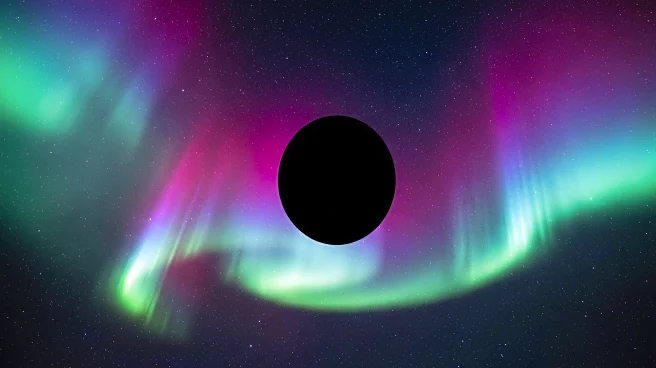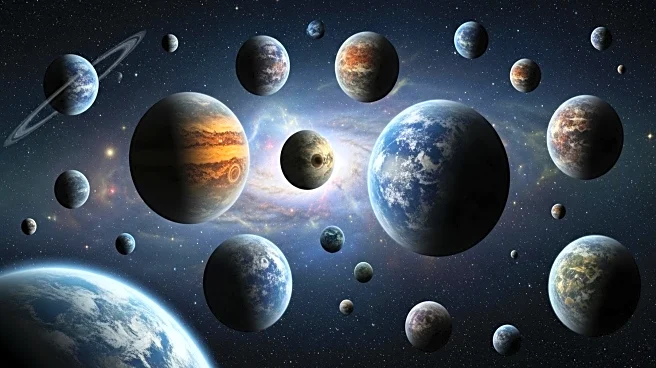What's Happening?
The James Webb Space Telescope (JWST) has provided a detailed view of the Crystal Ball Nebula, NGC 1514, located in the Taurus constellation. This nebula, formed from the outer layers of a dying star, is approximately 1,500 light-years from Earth. The JWST's observations have revealed intricate patterns and clumpy knots within the nebula's rings, which were previously undetectable. The nebula's center hosts a binary star system that has been shaping the nebula for around 4,000 years. The primary star has evolved into a super-hot white dwarf, emitting ultraviolet radiation that excites the surrounding gas, causing it to glow. The JWST's Mid-Infrared Instrument (MIRI) has allowed scientists to examine the nebula's turbulent nature comprehensively, revealing textures in the rings made up of small dust grains.
Why It's Important?
The JWST's observations of the Crystal Ball Nebula provide significant insights into the final stages of stellar evolution, particularly for stars similar to the Sun. Understanding the formation and structure of planetary nebulae can help astronomers predict the future of our own solar system's star. The detailed imagery captured by JWST enhances the scientific community's ability to study the composition and dynamics of nebulae, contributing to broader astrophysical research. This advancement in observational technology underscores the importance of space telescopes in expanding our knowledge of the universe.
What's Next?
Further analysis of the data collected by JWST will continue to refine our understanding of the Crystal Ball Nebula and similar celestial phenomena. Researchers may focus on identifying the absence of complex carbon molecules, which are common in other nebulae, to understand the unique characteristics of NGC 1514. Continued observations and studies will likely explore the interactions between the binary star system and the nebula, providing deeper insights into the processes governing stellar death and nebula formation.
Beyond the Headlines
The absence of polycyclic aromatic hydrocarbons in the Crystal Ball Nebula, which are typically present in other nebulae, presents an intriguing anomaly for scientists. This could lead to new theories about the chemical processes occurring in nebulae and the factors influencing their composition. The JWST's ability to capture such detailed images may also inspire advancements in imaging technology, benefiting various fields of research beyond astronomy.

